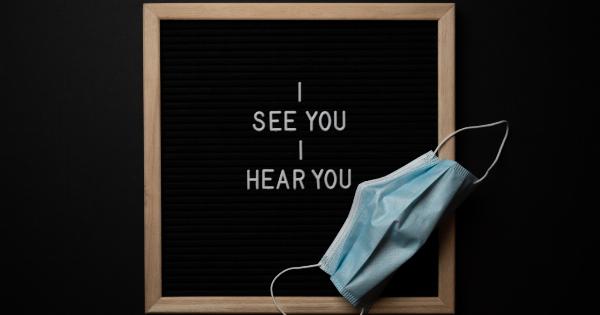Mental illness affects millions of people around the world, yet it is often misunderstood or stigmatized.
In recent years, there has been a growing movement to visually represent mental illness, using various forms of art and media to raise awareness and promote understanding. This article explores how visual representations of mental illness can help to break down barriers and provide a greater understanding of these often invisible conditions.
1. The power of visual representation
Visual representation has long been recognized as a powerful tool for communication. By using images, artists are able to convey complex emotions and ideas that can be difficult to express through words alone.
When it comes to mental illness, visual representation can play a crucial role in generating empathy and understanding.
2. Breaking down stereotypes
Mental illness is often surrounded by stereotypical images and depictions in popular culture. These stereotypes can contribute to stigmatization and prevent individuals from seeking help.
Visual representations of mental illness have the potential to challenge these stereotypes, providing a more nuanced and accurate portrayal of people living with these conditions.
3. Emphasizing the human experience
One of the challenges of understanding mental illness is that it is largely an invisible condition. Unlike physical illnesses, mental health challenges are not always immediately apparent.
Visual representations can help to bridge this gap by highlighting the human experience of living with and managing mental illness. Through art and imagery, individuals can share their personal stories and paint a picture of what it is like to live with these conditions.
4. Conveying emotions
Mental illness is often associated with a wide range of emotions, from sadness to anxiety to anger. These emotions can be difficult to express in words, but art can capture and communicate these feelings in a powerful way.
By visually representing emotions associated with mental illness, artists can provide a window into the internal struggles and challenges faced by individuals living with these conditions.
5. Raising awareness and reducing stigma
Visual representations of mental illness have the potential to reach a wide audience and raise awareness about the realities of living with these conditions.
By shining a spotlight on mental health through art, film, photography, and other media, we can encourage conversations, promote understanding, and reduce the stigma that still surrounds mental illness.
6. Offering a therapeutic outlet
Creating visual representations of mental illness can also be a therapeutic tool for individuals living with these conditions. Art therapy has long been recognized as a valuable intervention for improving mental health and well-being.
By expressing their experiences and emotions through art, individuals can gain a sense of control and catharsis, and find new ways to communicate and process their thoughts and feelings.
7. The role of social media
Social media platforms have become powerful tools for sharing visual representations of mental illness.
Hashtags like #mentalhealthart and #artformentalhealth have emerged as communities for artists, advocates, and individuals to share their work and experiences. The digital nature of social media allows for widespread dissemination of these visual representations, helping to amplify their impact and reach a global audience.
8. The importance of diverse representation
It is essential that visual representations of mental illness encompass the diverse range of experiences and identities within the mental health community.
By showcasing a broad spectrum of voices and perspectives, we can challenge stereotypes and ensure that everyone feels seen and heard. Representation matters, and visual representations of mental illness should strive to be inclusive and empathetic.
9. Inspiring hope and resilience
Mental illness can be incredibly challenging, but visual representations can also inspire hope and resilience.
By showcasing stories of recovery, strength, and resilience, art can provide a source of encouragement for individuals living with mental health challenges. These representations can serve as a reminder that there is hope for recovery and that individuals with mental illness are not defined solely by their conditions.
10. The evolving landscape
The visual representation of mental illness continues to evolve and adapt.
Artists and advocates are finding new and innovative ways to communicate the complexities of mental health through virtual reality, immersive installations, and other artistic mediums. As technology advances, we can expect visual representations of mental illness to become even more impactful and immersive.































